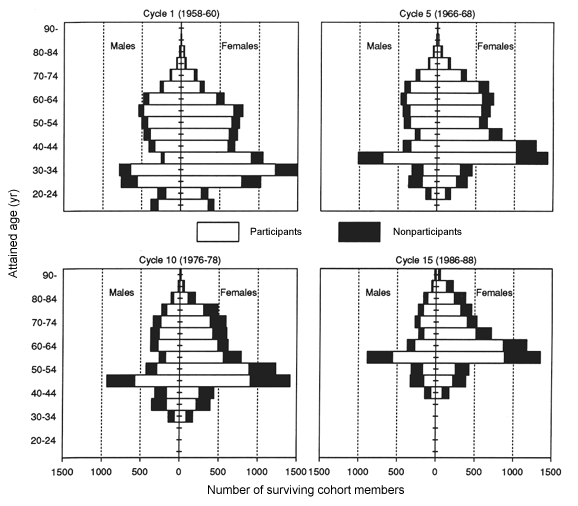Secular Changes of Population in the Adult Health Study
This article was originally published in RERF Update 4(2):14, 1992.
The Adult Health Study (AHS), a program of biennial medical examinations of a fixed subcohort of the ABCC-RERF Life Span Study (LSS) sample, was begun in 1958. The 18th cycle is currently underway. The procedure consists of medical history, physical examination, chest X ray, blood count, urinalysis, stool examination, electrocardiograms, and serum cholesterol determinations. Multiple blood biochemical measurements were initiated beginning in 1986 and ultrasonographic examination has been used since 1980 for diagnosing diseases related to abdominal organs.
The AHS cohort was originally defined as a fixed population of about 20,000 people. The cohort includes virtually all proximal survivors with acute symptoms of radiation exposure who were within 2000 m of the hypocenter and roughly equally sized age- and sex-frequency-matched samples of proximal survivors without acute symptoms, distal survivors, and nonexposed (not-in-city at the time of the bombings) controls. Since active follow-up of the nonexposed portion of the AHS ended in 1977, we focus on the exposed portion of the original AHS cohort known to have been alive in 1958–about 14,000 people.
These plots show the age and sex distribution of surviving members of the cohort for selected cycles. Persons refusing to undergo medical examination and migrants out of the contact area are shown as nonparticipants in the Figure.
By the end of cycle 15 approximately 4900 deaths had occurred among members of the AHS. Although participation rates remain relatively high, there clearly has been a decrease in the size of the cohort and, conversely, an increase in the proportion of surviving cohort members over 80 years old.


